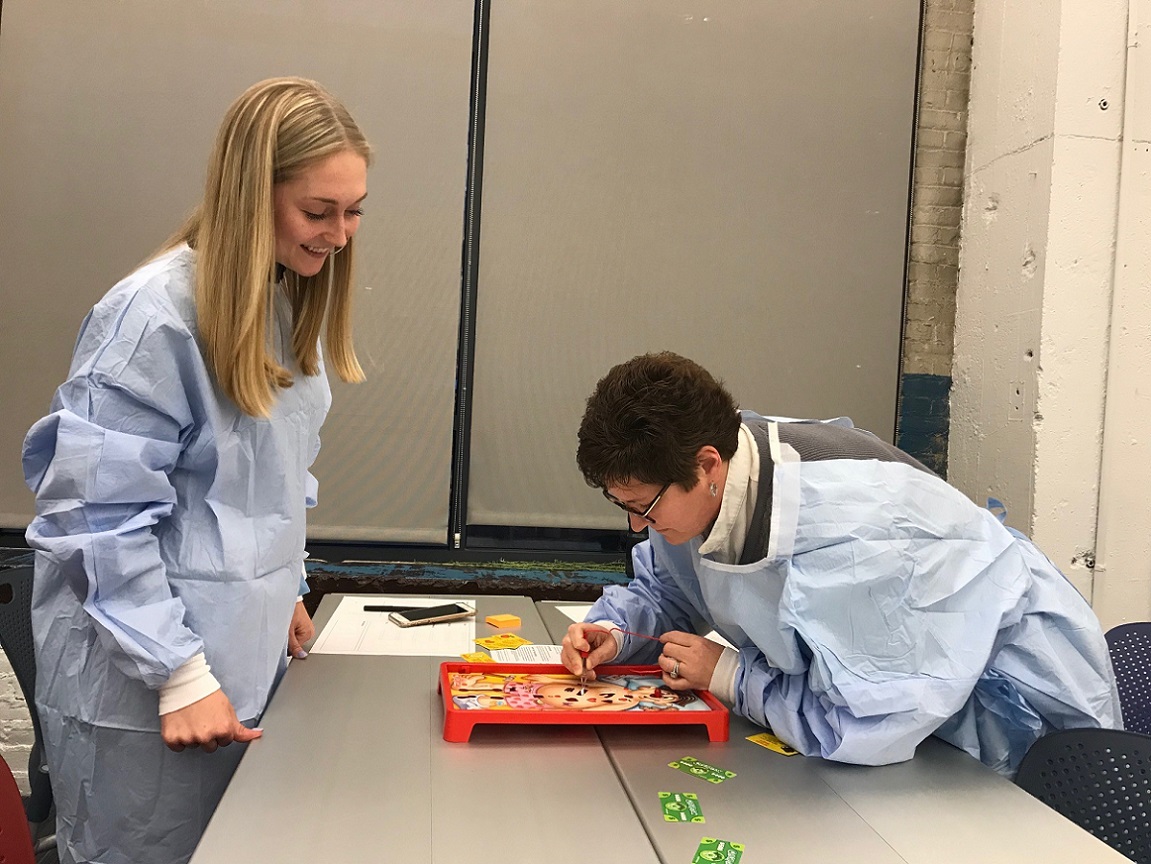
CCAD MDes candidates pull back the curtain on surgical gown and drape designs

When Dublin-based Cardinal Health wanted to improve its surgical gowns and drapes, it turned to Columbus College of Art & Design for a helping hand in determining ways they could further enhance the user experience.
The global Fortune 20 integrated healthcare services and products company sought a way to set itself apart by utilizing external perspective and expertise. And that’s where CCAD’s Master of Design in Integrative Design candidates came in. The project with Cardinal Health represented one of a number of collaborations in which students in the MDes program work to solve real problems for companies and nonprofit organizations.
The team of MDes students tackling Cardinal Health’s problem in fall 2018 included Elyse Applewhite (MDes, 2019), Weeraya Jirawongwaris (MDes, 2019), Priya Mehta (MDes, 2019), Christopher Rabineau (MDes, 2019), Kendra Rabineau (MDes, 2019), Maurshell Stokes (Interior Design, 2013; MDes, 2019), Elle Miller (MDes, 2019), Joseph Owens (MDes, 2019), and Shielaugh Divelbiss (Illustration, 2003; MDes, 2019).
(The project was also undertaken in collaboration with CCAD’s Fashion Design program, with support of students and adjunct faculty.)
The master’s degree candidates faced an essential question: “How might we address our customer’s most relevant and unmet needs to build measurable, category-leading, brand equity?”
The process
The MDes students took a variety of methods in their efforts to help Cardinal Health, studying how customers (surgeons, anesthesiologists, nurses, and scrub techs, among others) use the products; the trends in comfort, technology, and style that could impact gown design; how to address the interaction between surgical gowns and other medical devices as well as the use of drapes in a variety of surgical procedures.
The solutions
To combat the known and perceived issues, the MDes researchers used their experience with and understanding of custom-cut shapes and toward athletic and outdoor wear as inspiration (think athletic wear cuts, like a stretchy mock neck). The MDes candidates also suggested changes to how surgical gowns interact with other pieces of surgical wear to improve protection and efficiency. Extensive design research and user interviews yielded several possible improvements in the surgical drape category to save time and enhance the clinician experience.
All of these solutions have the potential to revolutionize surgery by improving common products used in every surgical procedure worldwide.
“The a-ha moment for us was when we realized from the CCAD students’ research that we need to balance our need for standardization from our customer’s need for customization. It made us rethink our portfolio—we have to fix the problem that we have created.”—Chelsea Fuller, Senior Global Portfolio Manager, Cardinal Health
Along the way, the surgical gown project picked up attention from such outlets as WOSU Public Media. (Columbus Monthly magazine also covered another Cardinal Health-MDes partnership in which Jirawongwaris and Mehta worked to create better incontinence garments.)
Learn more about CCAD's Corporate and Community Projects.
Post date
July 10, 2019